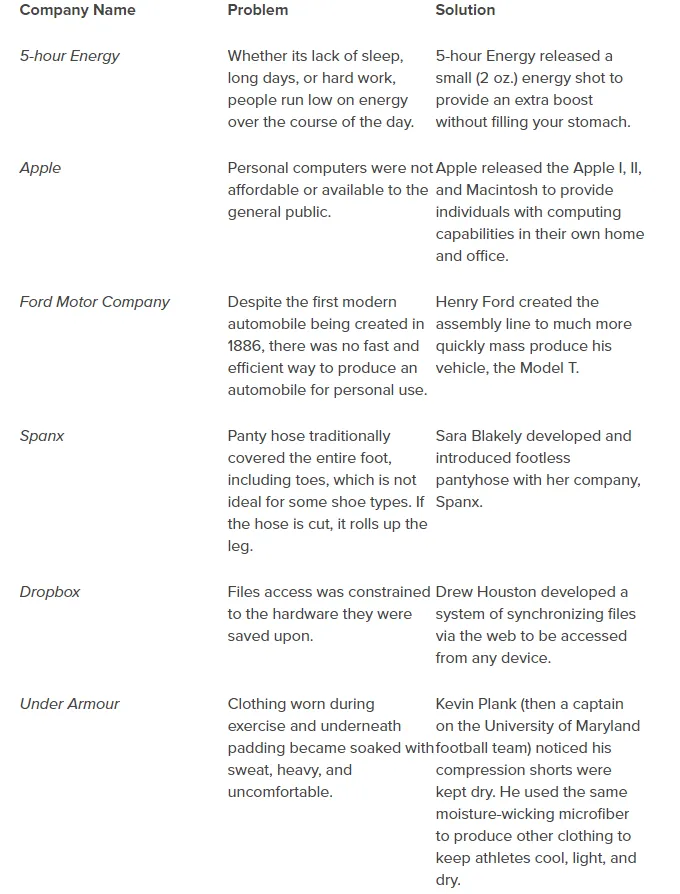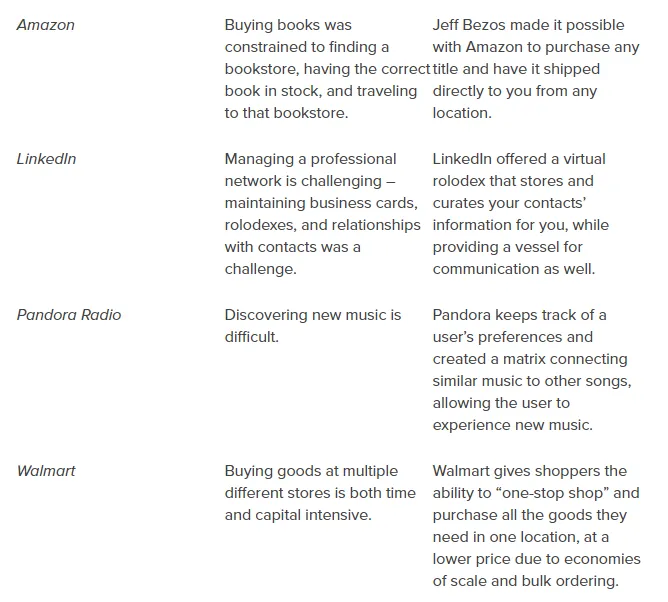Start-ups are the lifeblood of our economy and innovation across the globe. They create jobs, new products, dreams, and disruption. They are led by entrepreneurs who work hard to bring their ideas to life. Often overshadowed by failure, they persist and can change the world. We feel that entrepreneurs are heroes that need to be celebrated, and more importantly, supported by a community of fellow founders. It would be great if the process were easy, but it’s not. We’d like to help change that. In this guide we will take a shot at compressing the start-up learning curve with market tested lessons both old and new.
Solve important Problems.
Take a look around at the products and services you are currently using and surrounded by. Why are they there? Well, it’s because they are solving a problem or filling a need you would otherwise be experiencing.
This is how all great inventions and start-up businesses are born – from a problem or need. From electricity, to the telephone, to the Internet, and more recently to PayPal and Facebook, great businesses are built on big problems.
Consider this the first question on your start-up litmus test: “What problem does my start-up or idea solve, and how painful is that problem?” Think critically about this question, as an honest assessment may save hours, days, weeks, months, or years of your time.
Let’s look at two recent start-up examples:
Two Start-ups: The Difference Between Success and Failure
Dropbox
Dropbox is a file hosting service founded in 2007 by Drew Houston and Arash Ferdowsi. Shortly after being founded, the company was accepted into and backed by Y Combinator.
Houston, a developer by trade, began building Dropbox in 2006 while riding a bus from Boston to New York. Houston had originally planned to do some work on his laptop during the four-hour trip, but realized he didn’t have his USB memory stick. Immediately, Houston began building technology to store his own files over the Internet.[
Drew Houston’s problem was clear: he didn’t have his memory stick, but still wanted to work on the files stored on it. His solution: a service that stores files in the cloud and can be synchronized to or accessed from any device. Forgotten memory sticks, lost files from hardware crashes, and other related problems were no longer a risk.
Pets.com
During the dot-com boom of the late nineties, several companies took the scene and burned out in spectacular fashion. Pets.com was one of them.
Pets.com began in 1998 as an online retail supplier of pet supplies. The company raised nearly $300 million of investment funding and grew to over 300 employees at its peak. The problem was, the company was never profitable.
Despite a heavy advertising spend of over $11 million in its first fiscal year, a 4-story tall balloon in the Macy’s Thanksgiving Day Parade, and drawing quite a bit of media attention, the company liquidated in 2000 for one simple reason: they didn’t have customers.
Without customers, a business does not exist. And a business cannot gain customers without solving a problem or filling a need. Though it sounded nice in theory for pet supplies to be ordered online, no one was clamoring to have a squeak toy mailed directly to them, and other products, such as kitty litter, were often needed sooner than delivery would make them available.
Despite starting with a similar amount of funding, Dropbox excelled whereas Pets.com failed miserably. The difference? Dropbox solved a painful problem.




